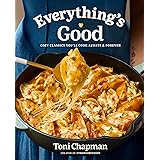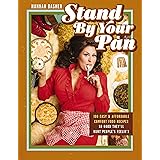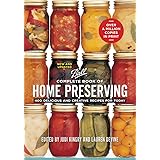Just as you wouldn’t limit your ice cream choices to vanilla when a world of exciting flavors awaits, why should your bread baking be confined to basic white flour? The journey into sourdough baking often opens up new culinary horizons, and one of the most rewarding paths to explore involves the incredible diversity of ancient grains. The video above dives headfirst into this very concept, pitting four prominent ancient wheats against each other in a hands-on sourdough experiment.
For those looking to significantly elevate their baking prowess and infuse their loaves with unparalleled flavor, texture, and nutritional value, understanding the unique characteristics of spelt, einkorn, emmer, and kamut is a game-changer. These heritage wheats represent a rich tapestry of history and flavor, offering a compelling alternative to the standardized modern wheat varieties dominant in today’s grocery stores.
Unearthing the Legacy of Ancient Grains: Beyond Modern Wheat
To truly appreciate ancient grains, it’s essential to understand what sets them apart from their modern counterparts. While wheat itself is indeed ancient, with its cultivation traceable back at least 7,000 years to the dawn of agriculture, the wheat flour commonly found today stems from varieties meticulously bred for industrial efficiency. These modern strains prioritize traits like exceptionally high yields and robust gluten structures that can withstand aggressive commercial mixers, often at the expense of flavor complexity and nutrient density.
Ancient varieties, conversely, have largely retained their original genetic makeup over centuries. They fell out of favor primarily because they weren’t compatible with the demands of the industrial food system. Their more delicate gluten structures, for instance, don’t fare well with high-speed, large-scale mixing. Furthermore, these grains possess tough outer hulls, akin to a corn husk, that necessitate specialized equipment for removal—a process far more involved than the easy separation from modern wheat during harvesting. Despite these challenges, there’s been a vibrant revival in artisan bread baking, driving a resurgence of interest in these heritage wheats.
The Untapped Potential: Flavor, Nutrition, and Digestibility
The rediscovery of ancient grains isn’t just about historical curiosity; it’s about unlocking a wealth of benefits. These grains bring an incredible depth of flavor that modern wheat often lacks, transforming a simple loaf of bread into a truly gourmet experience. Beyond taste, their nutritional profiles are often superior, boasting significantly higher protein content and a richer array of essential vitamins and minerals crucial for our well-being.
Many proponents also believe ancient wheats are more digestible than modern wheat, a claim often explored in studies by whole grain advocates. While the scientific community continues to research the specifics, the anecdotal evidence from bakers and consumers who find these grains easier on their digestive systems is compelling. Moreover, ancient wheats are remarkably compatible with organic farming practices. Their natural resilience allows them to outcompete weeds and thrive in poorer soils without the heavy reliance on synthetic fertilizers, making them a sustainable choice for environmentally conscious growers and bakers alike.
Meet the Contenders: A Closer Look at Spelt, Einkorn, Emmer, and Kamut
Each ancient grain offers a unique personality, influencing everything from the dough’s feel to the final loaf’s aroma and crumb. Understanding these individual traits is key to harnessing their full potential in your sourdough baking endeavors.
Einkorn: The Ancestor of All
Revered as possibly the oldest of all cultivated wheats, einkorn’s name, meaning “one kernel” in German, points to its distinctive single floret per spikelet—a stark contrast to modern wheat’s three to five kernels. This tiny grain yields a flour rich in carotenoids, imparting a subtle golden hue. Its delicate gluten and unique genetic structure mean it behaves differently in baking, often leading to stickier doughs, but capable of producing a surprisingly light and fluffy crumb, even with its lower gluten content.
Emmer: Robust Flavor and Resilience
Emmer kernels, slightly larger than einkorn, are celebrated for their remarkably robust flavor profile. Historically, emmer surpassed einkorn in popularity due to its hardiness, demonstrating superior heat tolerance and a reduced tendency to shed its seeds before harvest. It produces a soft flour with an attractive reddish tint, and while it may exhibit weaker gluten strength during the proofing stage, its profound flavor and aromatic qualities can truly elevate a loaf, making it a favorite for those seeking intense taste.
Spelt: The Complete Protein Powerhouse
A big, plump wheat kernel, spelt stands out for being a complete protein, offering all nine essential amino acids our bodies need—a rare find in the plant kingdom. Spelt flour often behaves quite similarly to modern wheat flour during baking, which is unsurprising given its closer genetic relation to common bread wheat compared to einkorn or emmer. While its dough might be surprisingly sticky to work with initially, it can build good strength and produce a pleasing loaf, though careful attention to proofing is needed to avoid a denser crumb.
Kamut (Khorasan Wheat): A Golden Delight
Kamut is the commercial name for Khorasan wheat, a grain native to the Northeastern province of Iran. As an ancestor of durum wheat, which is primarily used for pasta, Kamut naturally yields a beautiful golden flour from its thin, elegant kernels. Often described as a “dream to work with,” Kamut dough tends to be quite thirsty, absorbing more water than other ancient grains while still developing excellent strength and elasticity. Its baking performance often results in a tall, golden-crusted loaf with a tender interior and a subtly sweet flavor profile.
The Milling Advantage: Freshness for Flavor and Nutrition
The video highlights a critical element in unlocking the full potential of ancient grains: milling them fresh. Flour, once milled, begins to lose its vibrant flavor, fragrance, and nutritional potency over time as it’s exposed to air. Owning a countertop grain mill, like the Komo mentioned in the video, allows bakers to grind their grains just minutes before mixing their dough. This practice ensures maximum flavor, aroma, and nutrient retention, making a significant difference in the final quality of the bread.
Imagine freshly ground coffee beans versus pre-ground coffee; the difference is palpable. The same principle applies to flour. Freshly milled whole grain flours are living ingredients, brimming with character and a complex array of tastes that simply cannot be replicated by pre-packaged, shelf-stable flours.
Side-by-Side Sourdough Showdown: Practical Baking Insights
To truly understand how these ancient grains perform, the video put them to the test in a series of sourdough loaves. The methodology was consistent: each loaf used the same sourdough starter, water, salt, and a specific flour blend of 60% whole ancient wheat and 40% organic modern wheat. This 60/40 ratio is crucial, allowing the distinctive flavor of the ancient grain to shine through while the modern wheat provides additional gluten strength for a desirable, buoyant crumb.
Dough Handling Observations
Not all grains are milled alike, nor do they handle identically. The experiment found that milling at a consistent “third-from-finest” setting yielded buttery soft einkorn and kamut flours. Emmer, however, felt slightly sandy, and spelt retained larger bran pieces, suggesting potential adjustments in milling technique for optimal results. Dough hydration was set at approximately 77%, a manageable level for most bakers.
Einkorn and emmer doughs proved stickier, which is often expected due to their lower and more delicate gluten structures. Kamut stood out as the “thirstiest” dough, readily absorbing an additional 50 grams of water and showing potential for even more hydration without becoming unwieldy. It developed impressive strength, living up to its reputation as an easy-to-handle grain. Spelt dough, while surprisingly sticky during initial slap and folds, also built good strength, making it relatively straightforward to shape.
Proofing and Baking Results
After an overnight cold proof, the differences in gluten strength became more apparent. The einkorn and emmer doughs exhibited less elasticity and more slack, characteristic of their lower gluten content. Conversely, the kamut and spelt felt slightly less springy than ideal, hinting at potential under-proofing. This suggests that adjusting proofing times and hydration levels for each specific grain is key to achieving optimal results.
Despite these subtle variations in dough behavior, all four breads baked up beautifully. Einkorn, with its lower gluten, still managed a surprising vertical rise, even as it spread slightly. Emmer showed the weakest gluten strength but compensated with an incredible aroma and flavor. Kamut and spelt achieved the most vertical rise and developed stunning, crisp ears, with Kamut’s golden hue being particularly striking. Emmer’s loaf also showcased a lovely reddish tint, reflecting its raw kernel color.
Key Takeaways and Flavor Profiles
The internal crumb of each loaf provided further revelations. Einkorn yielded a surprisingly fluffy crumb, defying expectations for a low-gluten wheat. Emmer, contrary to predictions of a dense crumb, also had a pleasing open structure. While emmer might have lost the strength test, its robust flavor and fragrance were undeniable, making it the top choice for those seeking a profoundly aromatic and flavorful bread.
Spelt produced a denser crumb than anticipated, likely due to a proofing issue that could be resolved with a longer room temperature proof. Its flavor and aroma were the mildest of the four. Kamut, despite showing smaller holes in its crumb—potentially remedied with more water and a longer proof—still resulted in a light and tender interior. In the overall performance “Battle of the Ancient Grains,” Kamut emerged victorious for its excellent gluten strength, ease of handling, beautiful golden crust, tender crumb, and subtly sweet, captivating flavor.
Embracing the Ancient Grain Experience for Unforgettable Bakes
Once you’ve experienced the rich textures and flavors that ancient grains bring to your sourdough loaves, returning to 100% store-bought white flour might feel like a step backward to the “vanilla” of baking. Even when crafting a white loaf, incorporating at least 25% whole grain ancient wheat can dramatically enhance the bread’s flavor and aroma, making a noticeable difference.
Diving into the world of milling your own grain and experimenting with these ancient varietals is like an artist discovering a new palette of colors. Blending different ancient wheats can unlock even more extraordinary flavor combinations, transforming your baking into a vibrant, multi-sensory experience. You will truly be baking in Technicolor.
Beyond the Battle: Your Ancient Grain Questions Answered
What are ancient grains?
Ancient grains are heritage wheat varieties like Spelt, Einkorn, Emmer, and Kamut that have largely kept their original genetic makeup over centuries. They differ from modern wheat, which has been bred for industrial efficiency.
Why should I use ancient grains in my baking?
Using ancient grains can bring richer flavor, better texture, and superior nutritional value to your bread. Many people also find them easier to digest than modern wheat.
What are some common types of ancient grains?
The article highlights four main types: Einkorn, Emmer, Spelt, and Kamut (Khorasan wheat). Each offers a unique flavor and behaves differently during baking.
Why is milling ancient grains at home beneficial?
Milling ancient grains fresh at home, right before baking, helps retain their maximum flavor, aroma, and nutritional potency. This makes a significant difference in the quality of your finished bread.











